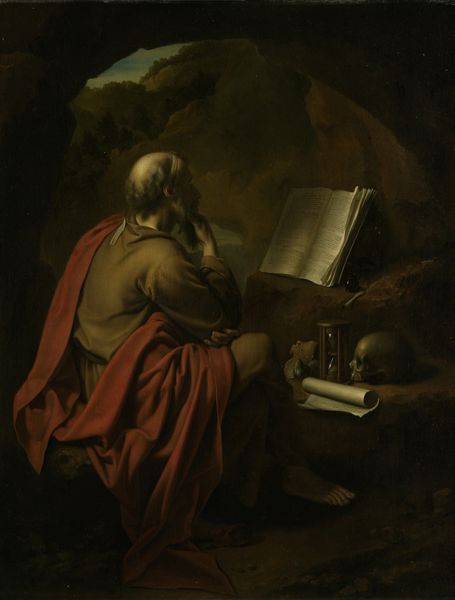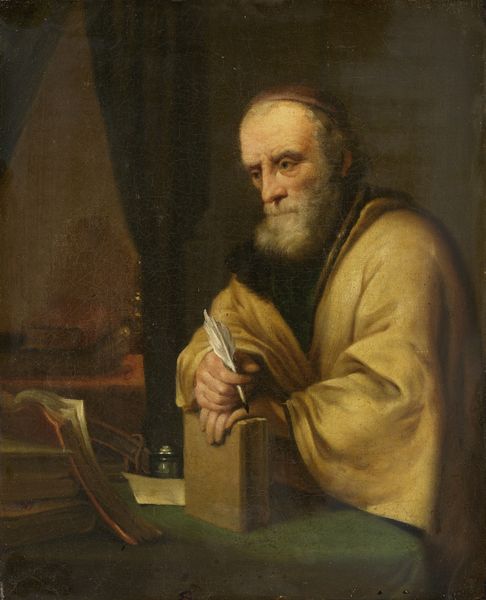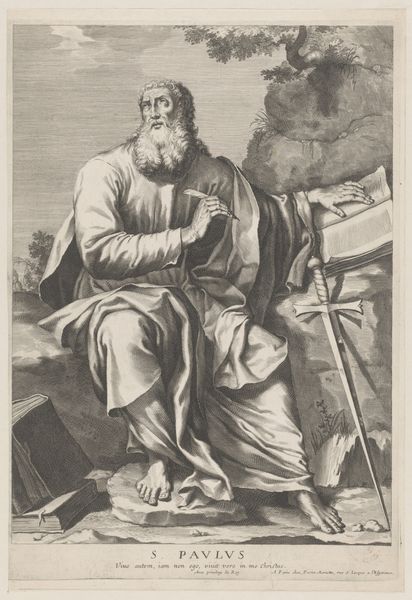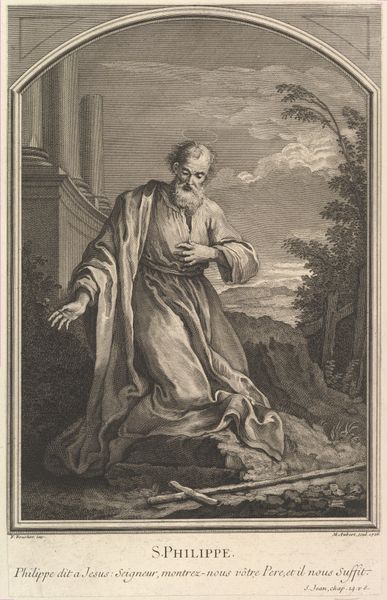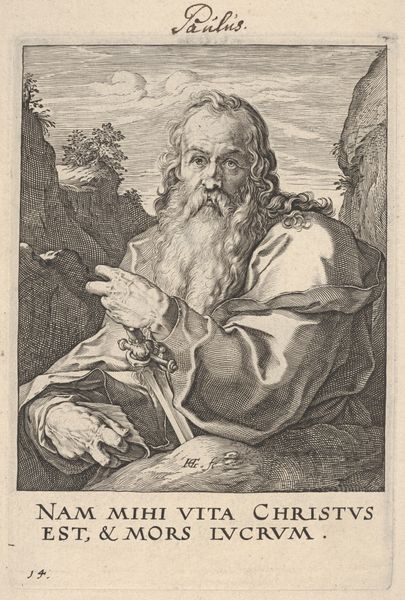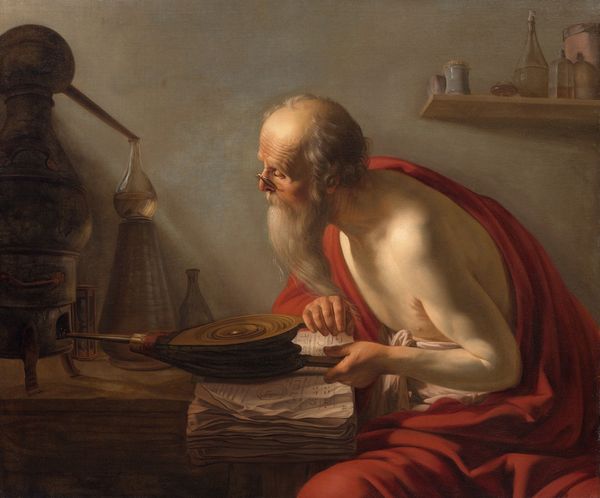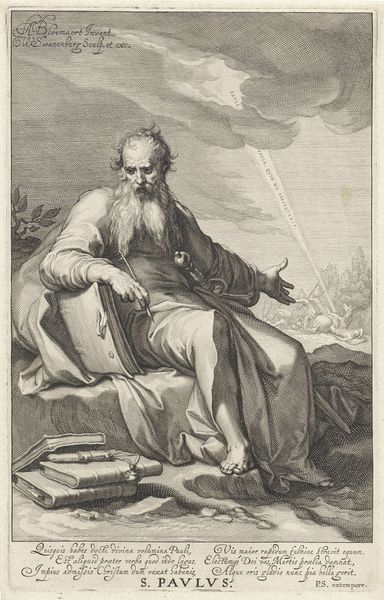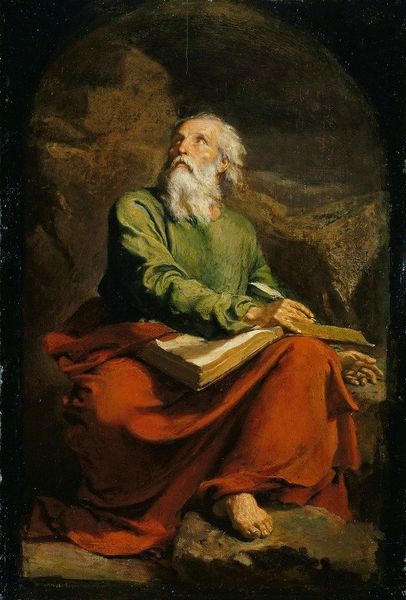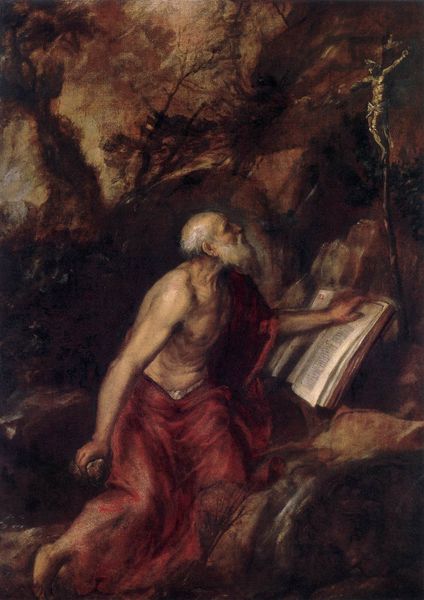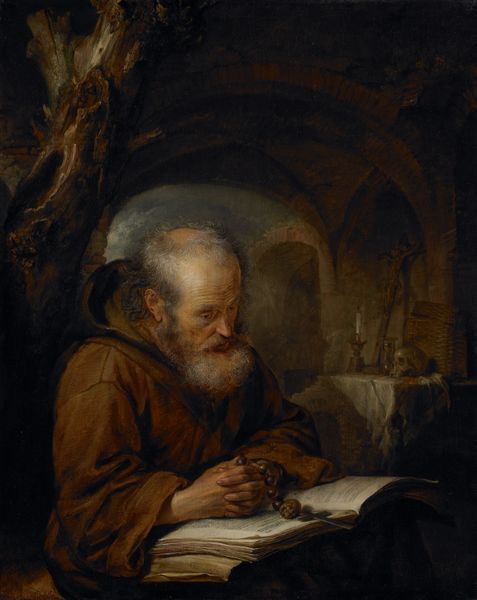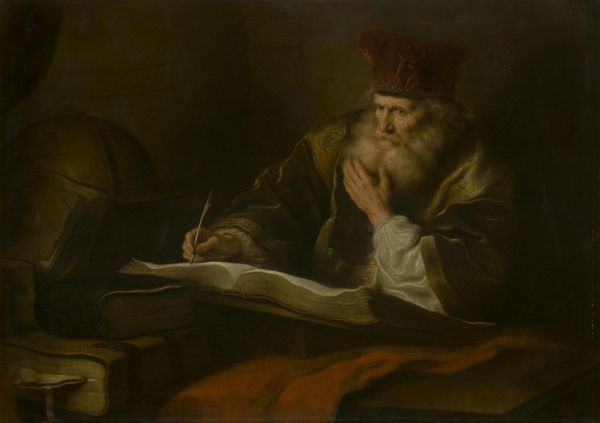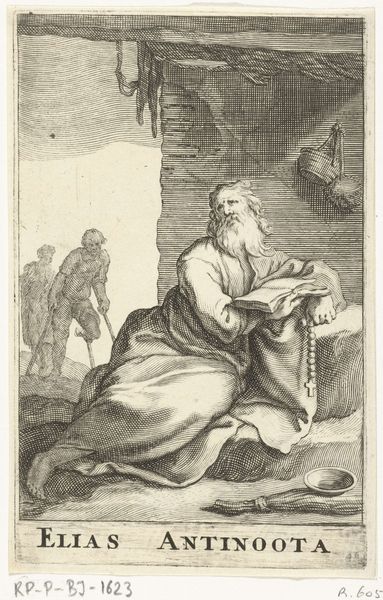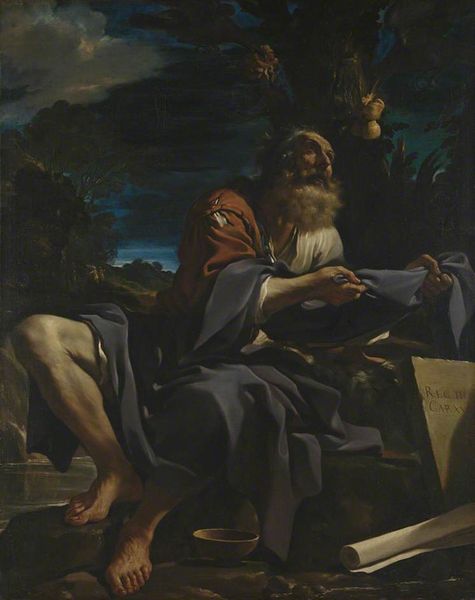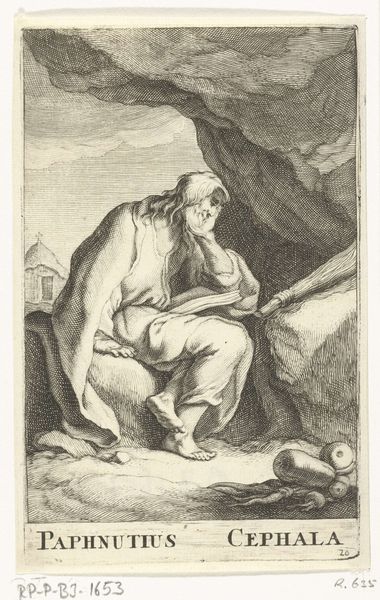
oil-paint, oil
#
portrait
#
baroque
#
oil-paint
#
oil
#
landscape
#
oil painting
#
vanitas
#
history-painting
Dimensions: 38.3 x 30.5 x min. 0.3 cm
Copyright: Public Domain
Curator: "St Jerome in the Desert," attributed to David Teniers the Younger and dating from around 1640 to 1645, depicts the saint within a landscape. Its compositional structure offers much to unpack, don't you agree? Editor: Absolutely. My first impression is…contemplative melancholy. Jerome’s got this look of profound thoughtfulness while lounging next to symbols of mortality like a bored undergrad. The skull feels a tad dramatic, if I'm being honest. Curator: The inclusion of vanitas symbols is not merely dramatic, but rather a calculated representation. Note the hourglass, the skull: these objects signify temporal fragility, reminding us of life's ephemeral nature within the grand composition. Editor: Sure, sure. Intellectually, I get it. Vanitas. Fleeting time. But the slightly faded red of Jerome’s robe and the distant, almost hazy landscape? They evoke this dreamlike quality, a sense that he's both present and absent, deeply connected to the intellectual work while disconnected to earthly affairs. Is there a lion back there? Curator: Indeed, a lion. The beast is a traditional attribute of St Jerome. His presence transforms this composition from a mere portrait to a meditation on piety, scholarship, and divine providence within a fallen world, or perhaps, a world to be redeemed. Look at the use of light: carefully distributed to illuminate specific elements. Editor: The lion looks more like a stray golden retriever that took a wrong turn to me! That’s kinda interesting; there’s something almost homely about it all, that deflates the grandeur somewhat. Is he losing his sandal? Curator: Observe how the light guides the eye towards Jerome's figure and then toward his attribute, highlighting their significance in decoding this scene. His sandal rests precariously; this visual component draws focus to St. Jerome's humanity. Editor: I suppose in some ways Teniers’ is humanising a saint, reminding us that spiritual work still takes place in, and with, the body! That red hat hung on the rocks seems to show his more ordinary role that he has perhaps rejected… maybe. It still strikes me as a work where peacefulness comes face to face with melancholy—where study offers as much refuge as burden. Curator: An interesting synthesis of perspectives, offering perhaps a wider reading. Your intuitive reaction blends into my formal observations neatly; thus the viewer may synthesise both to engage thoughtfully with the material reality before us.
Comments
No comments
Be the first to comment and join the conversation on the ultimate creative platform.
